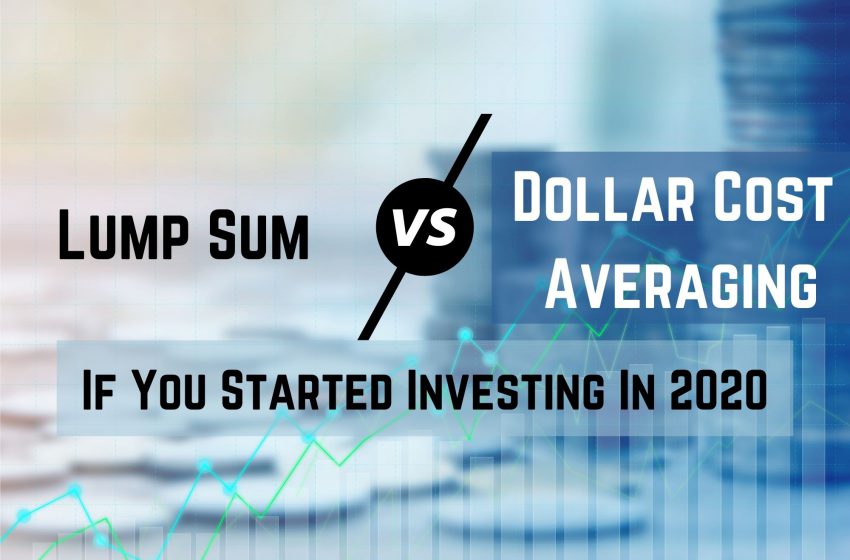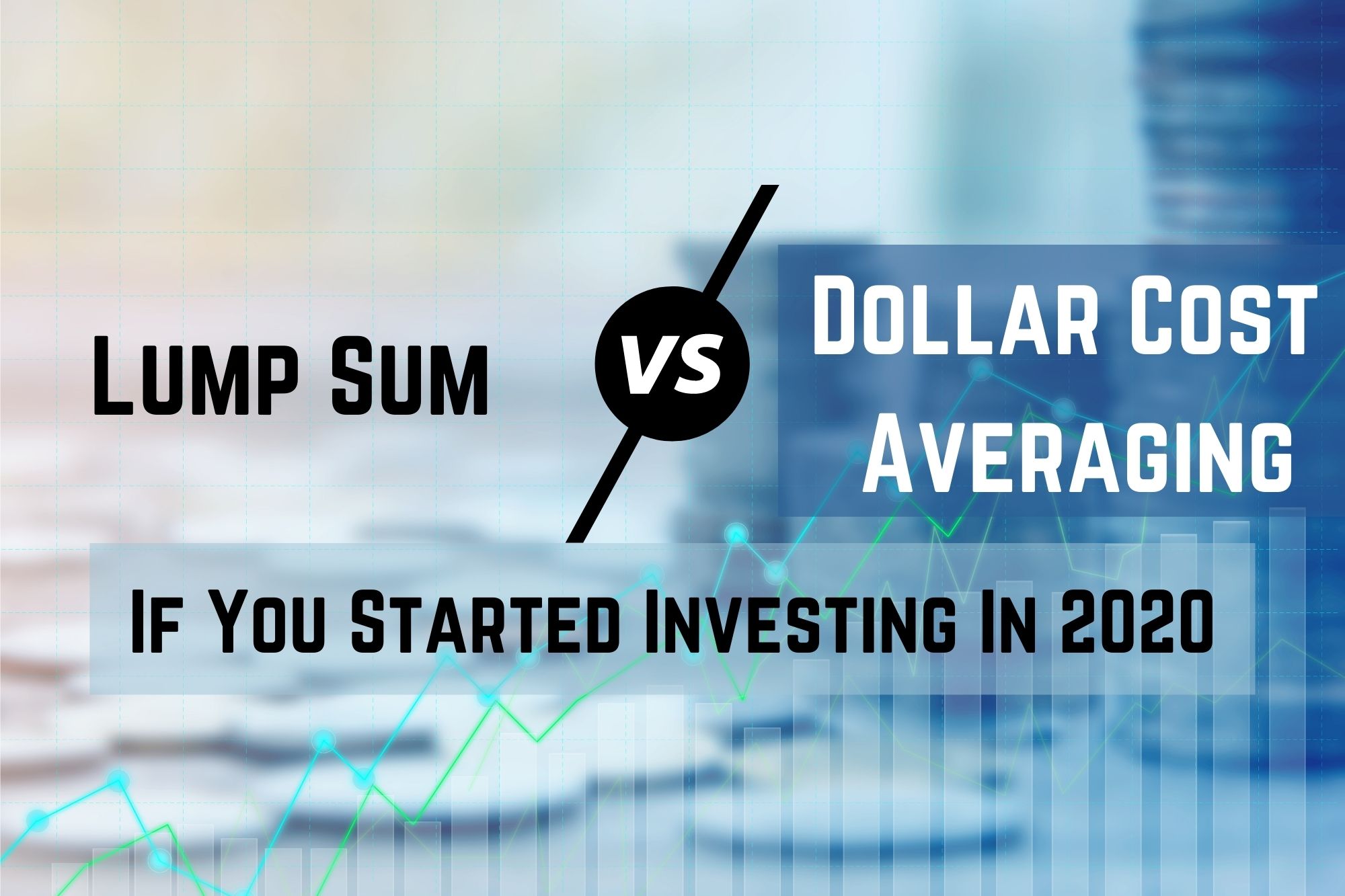Three causes there gained't be considered a 2021 housing industry crash

Lump Sum VS DCA: How Much Can you Have Made (Or Lost) Should you Started Investing In January 2021

As we enter 2021, some of us may have resolutions that appear much like what we had in 2021. One of these resolutions could be to start our investment journey in 2021.
This led us to think: for those of us who made this resolution to begin investing in January 2021, how would we have fared for the year? After all, 2021 was easily the worst year the world has experienced in recent history, with millions of lives lost, vast amounts of people affected, and also one of the worst stock markets crash in a long time.
To help us assess how our investments could have panned out in 2021, we assume that a person had $10,000 to invest at the beginning of 2021. The individual could have chosen to 1) invest in one lump sum, meaning $10,000 in January 2021, or 2) make use of a dollar-cost averaging (DCA) method to invest $833.33 each month for 12 consecutive months.
For this short article, we simply assume that the investor might have invested in one of two broad-based market indexes – the S&P 500 or even the Strait Times Index (STI).
#1 Lump Sum Investment of $10,000 On January 2021 Into The S&P 500
On 2 January 2021, the S&P 500 was at 3,257.85. If you had invested $10,000 on that day, you would have suffered a loss of about 31.3% by 23 March 2021. What this means is your portfolio would be worth only $6,870 on that day. You would felt incredibly unlucky at that point in time, given that you have lost near to 1/3 of your portfolio value in less than 3 months.
However, if you held onto your investment till 31 December 2021, you'd be sitting on profits for 2021. It is because the S&P 500 recovered to shut the year at 3,756.07, up about 15.3%. Your $10,000 investment at the start of 2021 would be worth about $11,530 by 31 December 2021.
#2 Lump Sum Investment of $10,000 On January 2021 In to the Straits Times Index (STI)
On 2 January 2021, the STI was at 3,252. If you invested $10,000 on that day, you would have suffered a loss of about 28.2% by 23 March 2021, once the STI hit 2,333.48. At that point, your portfolio would be worth about $7,180.
If you held on to your investment till 31 December 2021, your energy production of $10,000 in the STI at the start of the year would be worth about $8,740 as of 31 December 2021. This represents a loss of revenue of approximately 12.6% for 2021.
| Value On 2 January 2021 | Value of 23 March 2021 | Value on 31 December 2021 | |
| S&P 500 | $10,000 | $6,870 (-31.3%) | $11,530 (+15.3%) |
| STI | $10,000 | $7,180 (-28.2%) | $8,740 ( – 12.6%) |
Note: The calculation above does not take into consideration foreign exchange currency, transaction cost and dividend income
At its lowest on 23 March 2021, the STI didn't fall as much as the S&P 500. However, as the STI is still showing a loss of about 12.6% as of 31 December 2021, investors for the S&P 500 are sitting on a gain of about 15.3% as of 31 December 2021.
Would A Dollar-Cost Average (DCA) Approach Be Better?
We were curious about how a DCA strategy would have worked in 2021. After all, the idea behind DCA is that we invest exactly the same amount of money each month so that we buy fewer units when prices are high, and more units when costs are low.
#3 DCA In 2021 For S&P 500
Here's the way the calculation for the S&P 500 turned out if we invested $833.33 each month. Do note that the S&P price level each month we took is dependant on the index's closing price around the first trading day for each month.
| Month | S&P Level | Amount Invested | Units Bought |
| Jan | 3257.85 | $ 833.33 | 0.2558 |
| Feb | 3248.92 | $ 833.33 | 0.2565 |
| Mar | 3090.23 | $ 833.33 | 0.2697 |
| Apr | 2470.5 | $ 833.33 | 0.3373 |
| May | 2830.71 | $ 833.33 | 0.2944 |
| Jun | 3055.73 | $ 833.33 | 0.2727 |
| Jul | 3115.86 | $ 833.33 | 0.2674 |
| Aug | 3294.61 | $ 833.33 | 0.2529 |
| Sep | 3526.65 | $ 833.33 | 0.2363 |
| Oct | 3380.8 | $ 833.33 | 0.2465 |
| Nov | 3310.24 | $ 833.33 | 0.2517 |
| Dec | 3662.45 | $ 833.33 | 0.2275 |
| 31-Dec | 3756.07 | $ 10,000 | 3.1688 |
| Total Value (by 31 Dec 2021) | $11,902 | ||
From the table above, we are able to see that an investor who invested $10,000 over 12 months ($833.33 per month) would not only have a portfolio ($11,902) that is more vital than an investor who invested at the beginning of the year ($11,530) but would also suffer a lesser shock on 23 March 2021 when the market was at its lowest point.
#4 DCA In 2021 For Straits Times Index (STI)
The natural assumption that most people have is that investing in the STI in 2021 would have resulted in a loss. After all, the STI is down about for 2021. However, this is based on the assumption that an investor made a lump sum investment in January 2021.
If instead of investing a lump sum at the beginning of 2021, the intention was to invest an equal sum each month into the STI, how would we have fared in 2021?
| Month | STI Level | Amount Invested | Units Bought |
| Jan | 3252 | $ 833.33 | 0.2563 |
| Feb | 3116.31 | $ 833.33 | 0.2674 |
| Mar | 3007.72 | $ 833.33 | 0.2771 |
| Apr | 2440.27 | $ 833.33 | 0.3415 |
| May | 2563.69 | $ 833.33 | 0.3251 |
| Jun | 2550.86 | $ 833.33 | 0.3267 |
| Jul | 2610.17 | $ 833.33 | 0.3193 |
| Aug | 2484.91 | $ 833.33 | 0.3354 |
| Sep | 2538.55 | $ 833.33 | 0.3283 |
| Oct | 2500.74 | $ 833.33 | 0.3332 |
| Nov | 2443.13 | $ 833.33 | 0.3411 |
| Dec | 2814.12 | $ 833.33 | 0.2961 |
| 31-Dec | 2843.81 | $ 10,000 | 3.7473 |
| Total Value (as of 31 Dec 2021) | $10,657 | ||
The calculation above is dependant on the index's closing price on the first trading day for every month.
This may come as a surprise with a but had an investor dedicated to a DCA strategy in 2021, his STI portfolio could be worth about $10,657 as of 31 December 2021, or perhaps a gain of about 6.6% for that year.
This is pretty impressive because the general sentiment among investors would be that the STI is one of the worst-performing markets for the year. However, as you can tell, an investor who used a DCA approach would have made profits in 2021 investing in the STI.
Do note that our calculation doesn't take into consideration transaction costs and dividend income.
| Initial Investment | Investment Value On 31 December 2021 | Investment Gains In 2021 | |
| Lump Sum Investment (S&P) | $10,000 | $11,530 | +15.3% |
| Lump Sum Investment (STI) | $10,000 | $8,740 | -12.6% |
| DCA Investment (S&P) | $10,000 | $11,902 | +19.0% |
| DCA Investment (STI) | $10,000 | $10,657 | +6.6% |
Is A Dollar-Cost Averaging (DCA) Strategy Necessarily Better Than A Lump Sum Investment?
Based on the findings of this article, a DCA strategy may appear superior compared to a lump sum investment. However, this isn't always the case.
In the event of a bull-run, investors are the best off using a lump-sum investment strategy so when much capital is being deployed, as quickly as possible. This allows investors to maximise their gains on the market.
However, in a high volatility period such as what we witnessed in 2021, a DCA technique is preferable since it allows us to get more units when prices are low and fewer units when prices are high. At the same time, we also steer clear of the fear of seeing our portfolio lose a sizeable slice of its value in a short period.
In fact, as seen in the illustration of a DCA approach towards investing in the STI, investors could have even made profits in 2021 although the index was underperforming.





